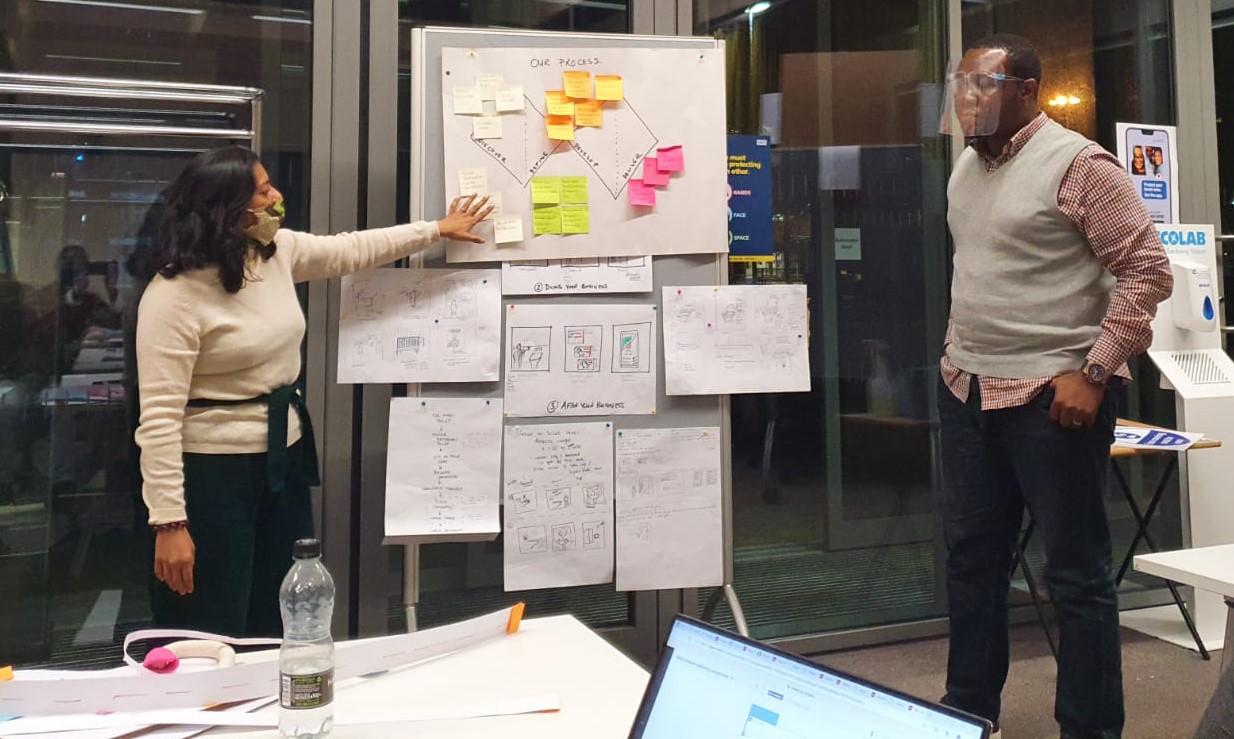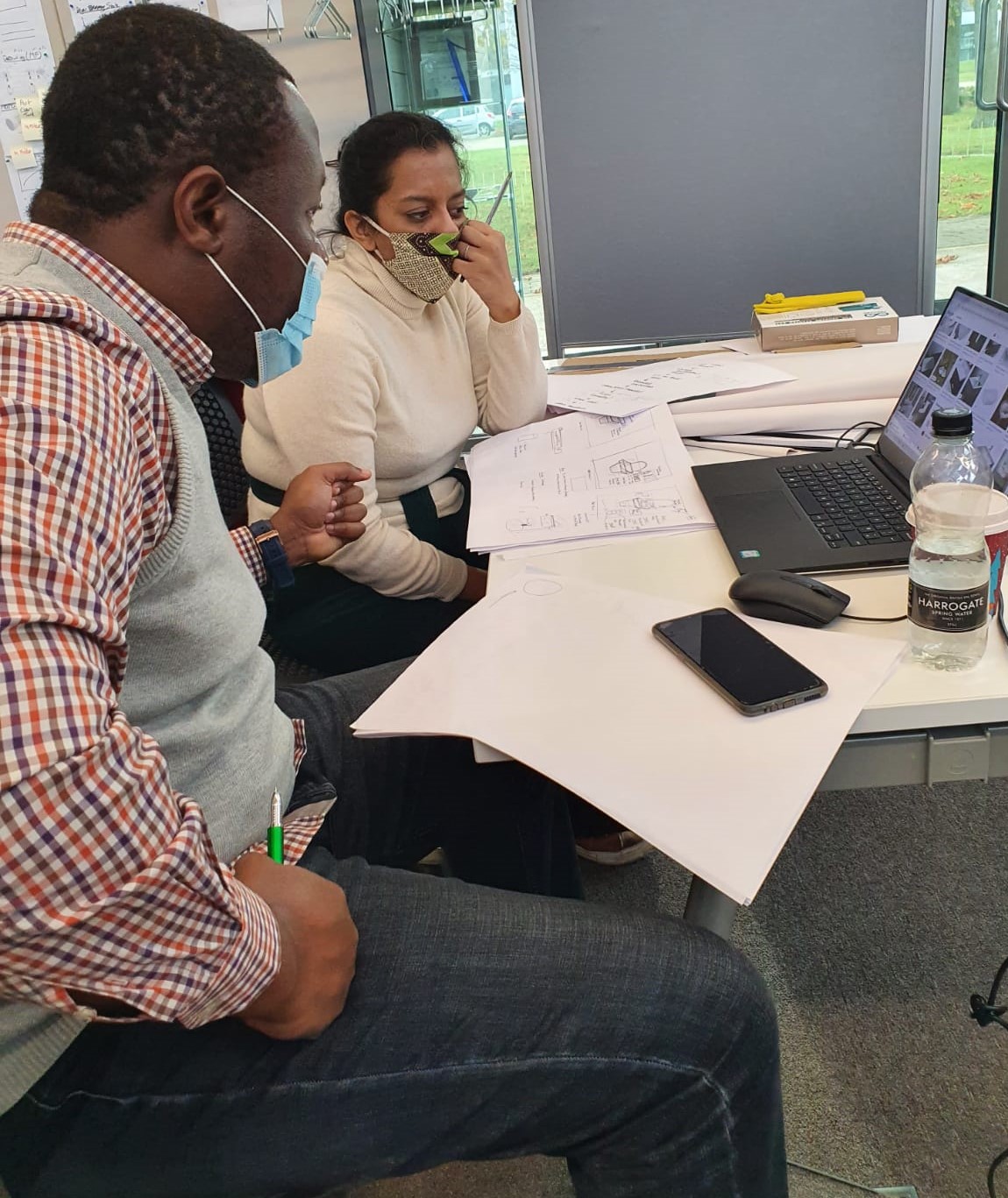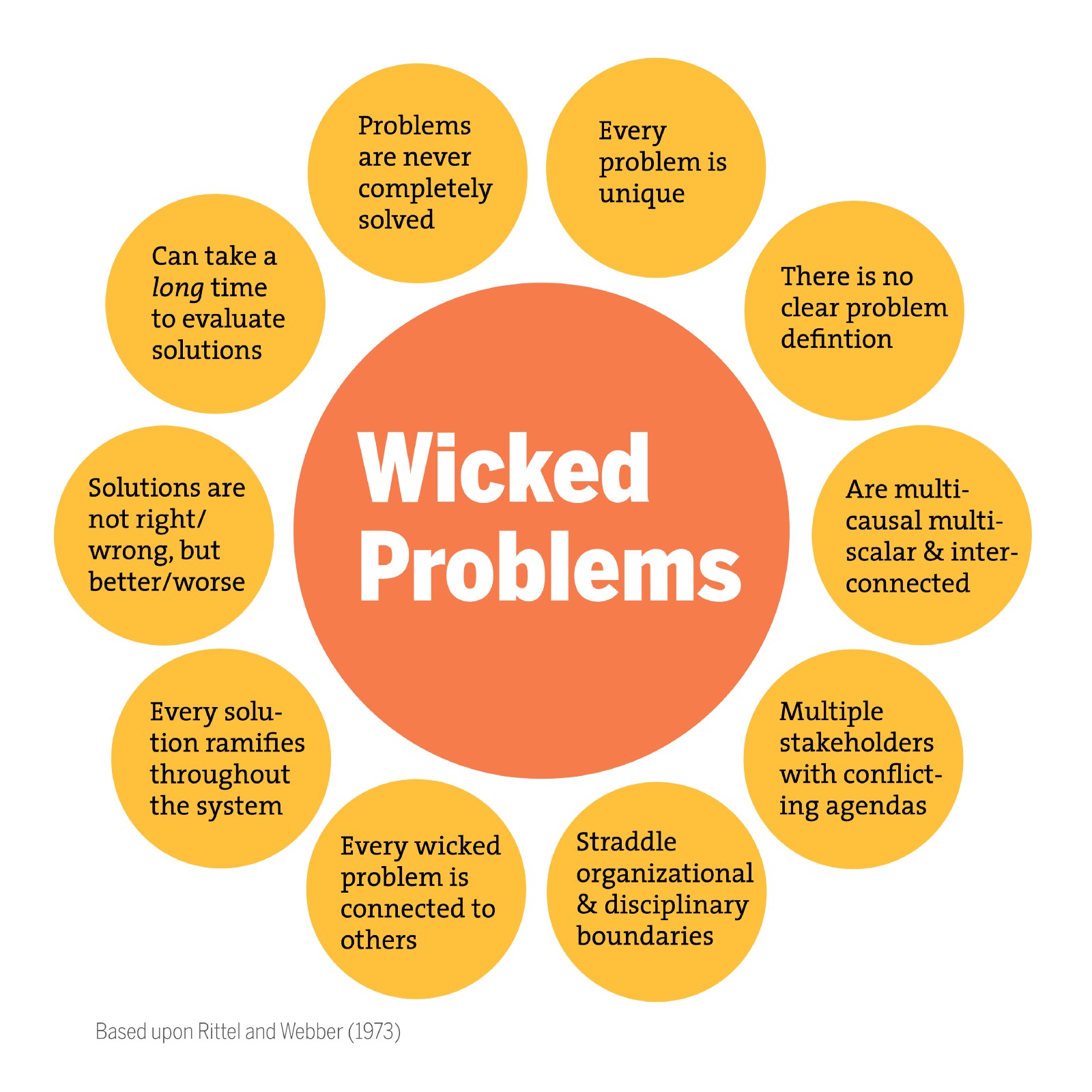Designing for Wicked Problems
01/02/2021

The challenges occasioned by the Covid-19 pandemic generated lots of mixed feelings for me and I believe for other students as well at the commencement of the current Design Thinking MDes session. Mainly because the movement restrictions as a result of the safety protocols introduced by the government and the school to help stem the spread of the disease meant that we couldn’t participate in many face-to-face group activities as we would have loved to or make several site visits which were a common feature of the program in previous years. However, there were some silver linings that are worthy of mention.
Our abilities as students to adapt to the current situation (a major skill requirement for the next decade) was brought to the fore. For instance, I remember at the early days of the program, I had to joggle a lot of things. At one point I recalled receiving lectures and participating in group discussions while about to go in for my Covid-19 PCR test which was a requirement for international travelling in my country. At another point, our class worked on an industry led assignment while I was in the mandatory 14-day quarantine for foreigners who recently arrived in the UK. We leveraged new collaborative software applications that enabled us accomplish the task and deliver on the project despite working remotely. The feedback on the final delivery despite the constraints were very positive and heartwarming.

The lectures especially those from the guest lecturers were inspiring and true to its purpose, lit light bulbs of creative and innovative ideas in my mind. Design for Behavioral change rings a loud bell. Same goes with the technology and prototyping sessions which afforded the entire students in the module (we had students from other program join this class) to conceptualize, design and prototype technologically driven products and services. I hope in the nearest future, some of the ideas prototyped and showcased during that class project will be real products donning shelfs in supermarket or people’s homes.
Another high point of the MDes program for me so far was my introduction to the concept of wicked problems in the Whole systems Design module, that is where this write-up got its name.
Wicked problems are complex problems. They have very many interdependent parts that are constantly changing and evolving thus making the problem very difficult or near impossible to solve.

Image credit: That’s a Wicked Problem… | The Society of Philosophers in America (SOPHIA)
Professors Horst W.J. Rittel and Melvin M. Webber who coined the term wicked problem in their 1971 paper “Dilemmas in a General Theory of Planning” listed ten characteristics of wicked problems and every one of them lend credence to the complex nature of wicked problems.

(Source: CMU Transition Design, Irwin & Kossoff)
Even though these problems can be encountered on an organizational, national or global level, some things about wicked problems are constant, for example human beings are major stakeholders who either contribute or are impacted by the wicked problems. Secondly, you can have several attempts at providing solutions to wicked problems as there are no one silver bullet solution for them. Thirdly and related to the second point is that there are no specific skill requirements to generate solutions for wicked problems meaning that solutions can come from any field of endeavor or from any quarter so far, its contribution to ameliorating the effects of the problem is tangible. Finally, collaboration amongst various disciplines, teams, organizations, nations e.tc is a key requirement for generating solutions to wicked problems.
From the above, it is obvious that the concept and frameworks of Design Thinking can be applied to generate numerous solutions for any identified wicked problem. In fact, Richard Buchanan through his 1992 paper titled “Wicked Problems in Design Thinking” made the connection between Design Thinking and the innovation strategies needed to start addressing wicked problems.
My home country Nigeria, is plagued with a lot of wicked problems, ranging from poverty, unemployment, low quality healthcare services to lack of financial Inclusion. However, these problems present huge opportunities for passionate individuals from different backgrounds, working with like minds to Design and commercialise innovative solutions in Fintech, Health-tech and food-tech spaces to address these wicked problems. This is the main reason I decided to do the Design Thinking MDes as I’m very optimistic that in the nearest future, in collaboration with others, I will Design for Wicked problems in Nigeria and beyond, feel free to come join the design train.
Categories & Tags:
Leave a comment on this post:
You might also like…
Keren Tuv: My Cranfield experience studying Renewable Energy
Hello, my name is Keren, I am from London, UK, and I am studying Renewable Energy MSc. My journey to discovering Cranfield University began when I first decided to return to academia to pursue ...
3D Metal Manufacturing in space: A look into the future
David Rico Sierra, Research Fellow in Additive Manufacturing, was recently involved in an exciting project to manufacture parts using 3D printers in space. Here he reflects on his time working with Airbus in Toulouse… ...
A Legacy of Courage: From India to Britain, Three Generations Find Their Home
My story begins with my grandfather, who plucked up the courage to travel aboard at the age of 22 and start a new life in the UK. I don’t think he would have thought that ...
Cranfield to JLR: mastering mechatronics for a dream career
My name is Jerin Tom, and in 2023 I graduated from Cranfield with an MSc in Automotive Mechatronics. Originally from India, I've always been fascinated by the world of automobiles. Why Cranfield and the ...
Bringing the vision of advanced air mobility closer to reality
Experts at Cranfield University led by Professor Antonios Tsourdos, Head of the Autonomous and Cyber-Physical Systems Centre, are part of the Air Mobility Ecosystem Consortium (AMEC), which aims to demonstrate the commercial and operational ...
Using grey literature in your research: A short guide
As you research and write your thesis, you might come across, or be looking for, ‘grey literature’. This is quite simply material that is either unpublished, or published but not in a commercial form. Types ...







This is positively provocative for people who are incubating a desire to make a difference in the art of providing creative solutions. I believe creating solutions cuts across the entire scope of the concept of problems.
Great piece Bro. I think this write up is a good material for publishing.
Nice one.
I personally believe that this is relevant in some emerging or developing economies. Though the level of complexities may be different, it will help chart a course for ensuring sustainable solutions are in place.
In Nigeria, where I operate as a Business Consultant, the uniqueness of the design for a wicked problem begins with the thought of it. So, where poverty, unemployment, poor healthcare and the huge trough in financial inclusion have been mentioned, the presence of unstable government policies, insecurity and high level of illiteracy are overwhelming.
I personally would therefore suggest that in designing such wicked problems, sectional solutions would be invaluable in the comprehensive design to the research fellow who must be able to discuss this meaningfully.
Regards.